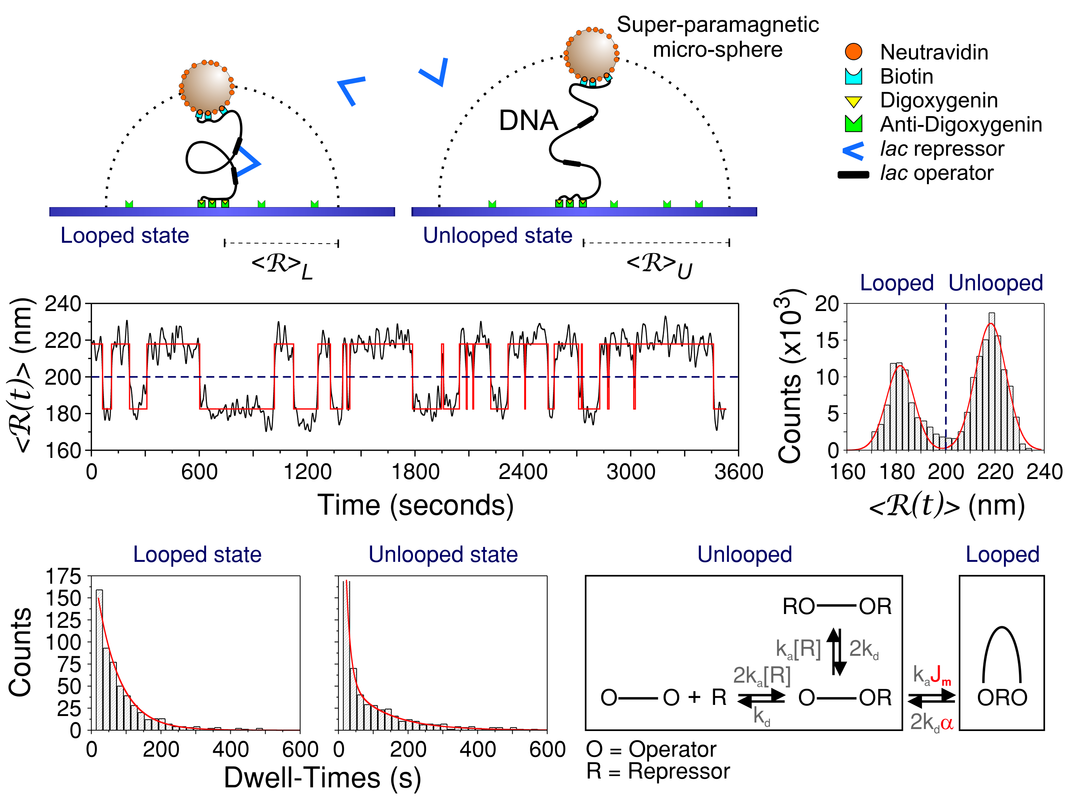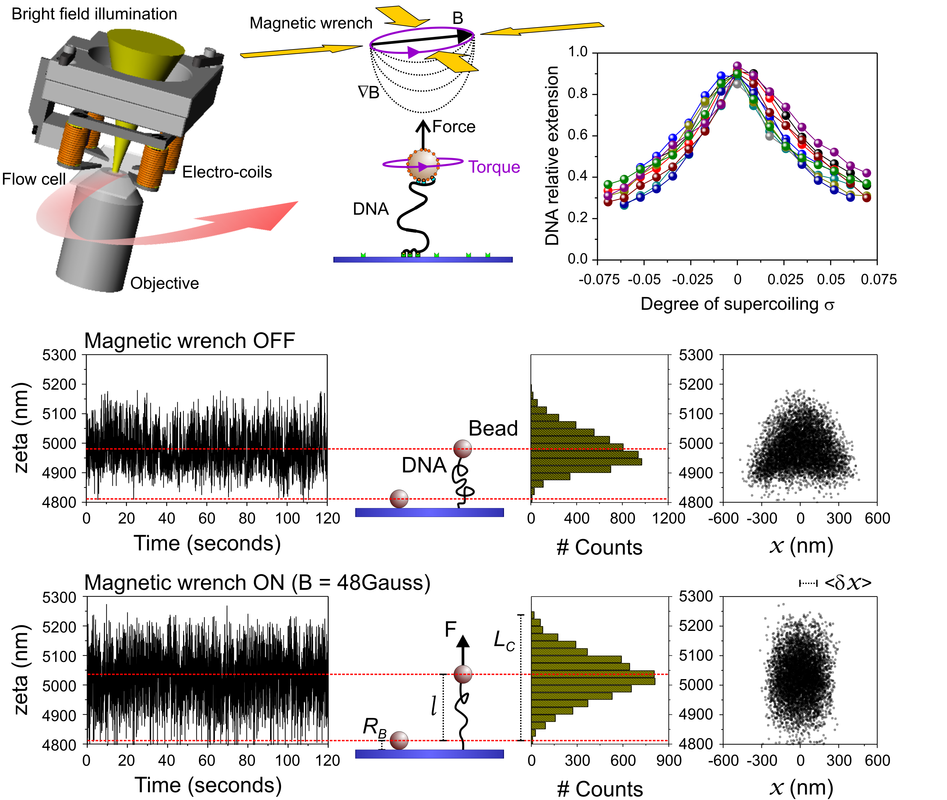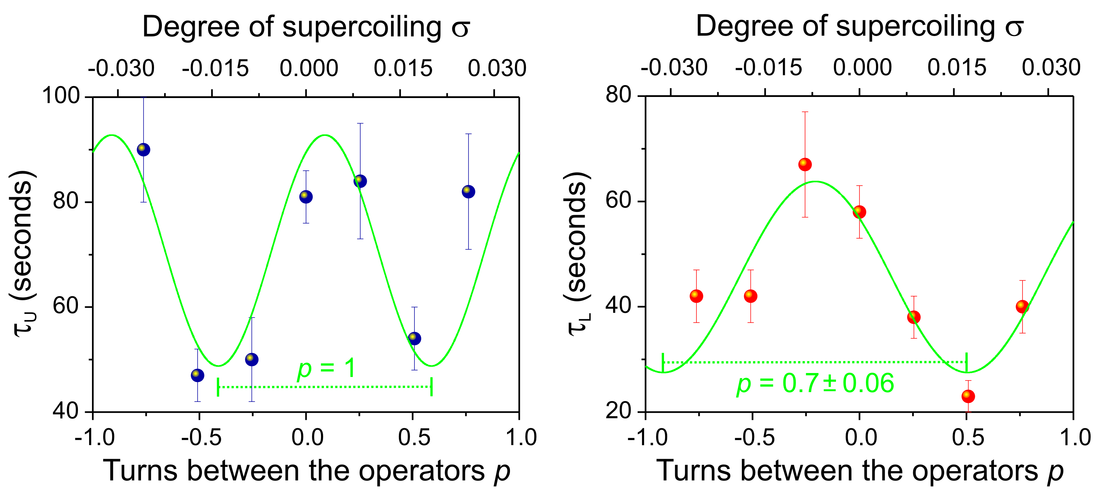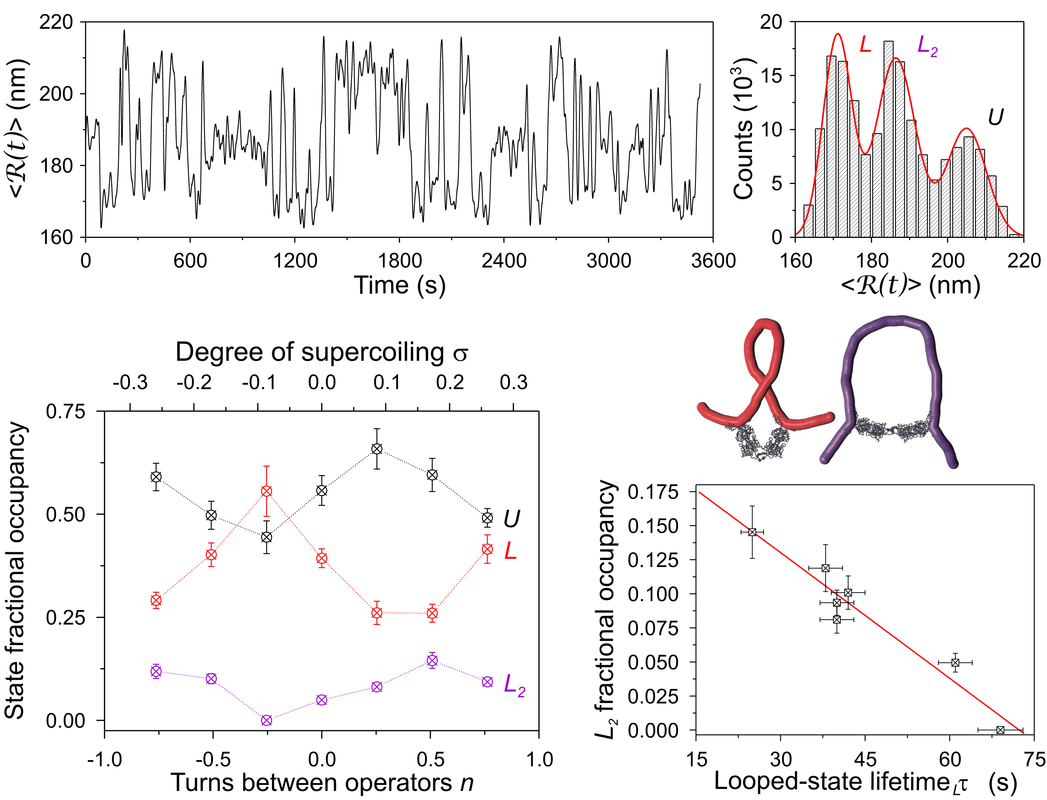lac repressor-DNA interaction kinetics under torsional constraints
_
During
my Ph.D., I started being interested in transcription regulation and especially
in the relationship between DNA mechanics and protein-DNA interactions. More
into the details, I investigated how DNA supercoiling was affecting the
interaction kinetics between the DNA and the lac repressor (LacI),
a DNA-looping transcription factor regulating lactose digestion in bacteria. In
particular, I used a single-molecule assay to observe in real-time the LacI
activity and to simultaneously control the degree of supercoiling of the DNA, under very low stretching forces (i.e. in the Entropic regime of the DNA), thanks to a 3D magneto-optical micro-manipulator. The
micro-manipulation experiments I performed revealed that the LacI-DNA looping
kinetics are modulated by the degree of supercoiling of the DNA and that the LacI-DNA
looped complex undergoes to a structural rearrangement, with the LacI forced to
assume an “open” conformation, in response to the relative orientation of the lac binding sites along the DNA
molecules. These
findings corroborate the view that DNA topology plays a key role in modulating
the efficiency of transcription repression in the lac system and that
DNA supercoiling can indeed represent a powerful message relaying global effects of environmental changes
onto specific responses of regulatory systems, provided that those systems are sensitive to supercoiling.
Related publications
Normanno D., Vanzi F., and Pavone F.S., “Single-molecule manipulation reveals supercoiling-dependent modulation of lac repressor-mediated DNA looping”. Nucleic Acids Research 36, 8, 2505-2513 (2008)
People involved
Prof. Francesco S. Pavone
Dr. Francesco Vanzi Institutions & fundings
|
Schematics of the Tethered-Particle-Motion assay used to measure the LacI looping kinetics
Single DNA molecules torsional manipulation under very low stretching forces The LacI looping kinetics are modulated by the degree of supercoiling of the DNA LacI undergoes to a conformational change in response to DNA torsional manipulation |






